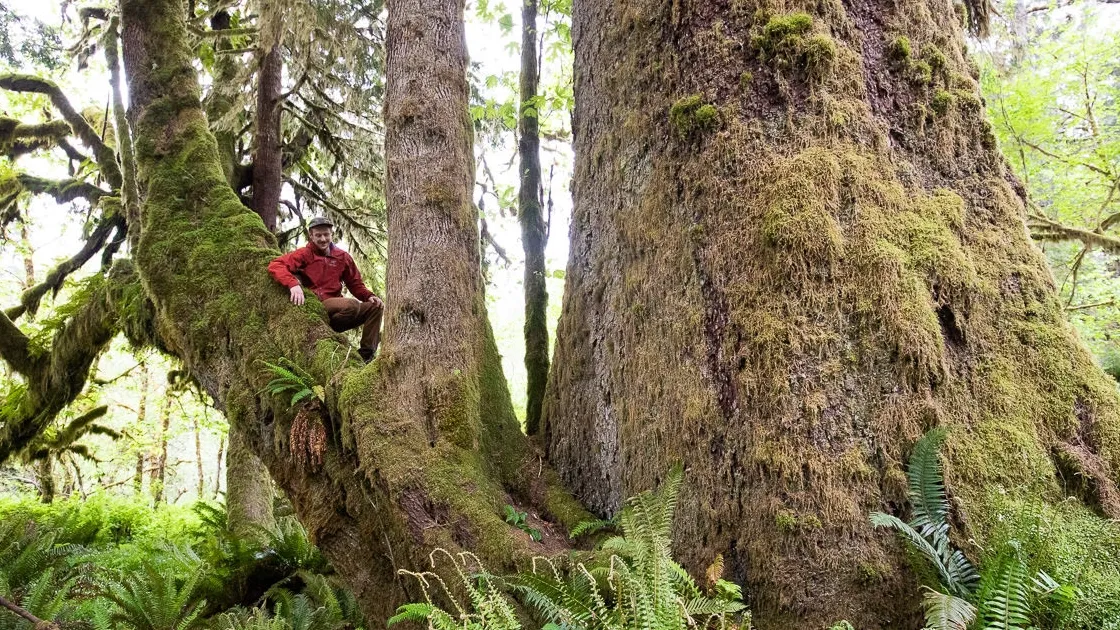In a landmark move, British Columbia has forged a historic $1 billion agreement in collaboration with the federal government and Indigenous leaders, signaling a commitment to protect the region’s rich biodiversity. This groundbreaking nature agreement is unparalleled in scope, with substantial financial commitments of up to $500 million each from both the federal and B.C. governments spanning the next eight years.
The significance of this accord lies in its multifaceted approach to address pressing environmental concerns. With biodiversity under threat, the agreement sets forth a comprehensive strategy to combat climate change and safeguard endangered species, prominently featuring the critically endangered spotted owl. This substantial financial commitment underscores the parties’ dedication to environmental preservation and sets a precedent for future collaborative efforts in conservation.
As the first of its kind, this agreement signifies a united front against environmental challenges, emphasizing the collective responsibility of governments and Indigenous leaders in ensuring the longevity and health of B.C.’s biodiversity and diverse ecosystems.
Aims and Objectives of the Agreement
The core objective of this groundbreaking agreement is twofold: to tackle the challenges posed by climate change and to protect endangered species, with a particular emphasis on the imperiled spotted owl. At the heart of this monumental deal is a substantial allocation of $50 million dedicated to preserving an expansive 13,000 square kilometers of old-growth forests throughout British Columbia. This strategic initiative aligns seamlessly with the province’s ambitious commitment to safeguard 30% of its total land and water resources by the year 2030.
The comprehensive approach outlined in the agreement demonstrates a clear intent to address both the immediate threats posed by climate change and the long-term preservation of the region’s biodiversity. By targeting specific funding toward the protection of old-growth forests, the agreement acknowledges the vital role these ecosystems play in mitigating climate-related disasters, supporting endangered species, and achieving the overarching conservation goals set by British Columbia.Heading
Addressing the Urgency of Climate-Related Disasters
Premier David Eby highlighted the urgency of the situation, pointing to the recent loss of millions of hectares to wildfires and prolonged droughts affecting the region. Emphasizing the role of wild spaces, forests, and old-growth areas as crucial defenses against climate-related disasters, Premier Eby expressed optimism that the agreement would expedite old-growth forest protection while recognizing the leadership of First Nations in conservation.
Funding for Habitat Restoration and Conservation Efforts
In a strategic move to fortify habitat restoration and conservation initiatives, the $1 billion agreement is supplemented by a crucial commitment from Natural Resources Canada. This additional contribution, exceeding $100 million, is sourced from the two billion trees program. The allocated funds are designated for planting trees and revitalizing essential habitats crucial for the survival of species at risk. A primary focus of this concerted effort is to arrest the decline of various species, with special attention given to the critically endangered spotted owl.
This multi-faceted approach not only underscores the financial commitment of the involved parties but also emphasizes the importance of proactive measures in sustaining and revitalizing ecosystems. The infusion of funds into habitat restoration aligns seamlessly with the broader conservation objectives of the agreement, demonstrating a collective determination to address the immediate needs of endangered species and contribute significantly to the overall health and resilience of British Columbia’s diverse ecosystems.
Indigenous Voices and Recognition of Leadership
Central to the fabric of this historic agreement is the active involvement and influential role played by leaders from the First Nations Leadership Council. At the forefront of shaping this landmark deal is Robert Phillips, who has underlined the imperative to rectify historical injustices. He has articulated the crucial contribution of Indigenous voices in the decision-making process. The collaborative endeavor marks a pivotal moment in history, symbolizing a united front where provincial and federal governments join forces with First Nations in a shared mission to combat biodiversity loss and address the challenges posed by climate change.
The inclusion of Indigenous perspectives not only underscores a commitment to reconciliation but also recognizes the wealth of traditional knowledge that Indigenous communities bring to the table. By acknowledging and incorporating these voices, the agreement not only becomes more comprehensive but also sets a precedent for inclusive and equitable approaches in future environmental conservation efforts.
Reactions and Expectations from Environmental Groups
Environmental groups in British Columbia have generally welcomed the announcement, although some, like the Wilderness Committee, express concerns about the lack of detailed legislative changes for industrial projects. They hope the agreement will bring respect for the decision-making rights of First Nations and hold the governments accountable for doubling protected lands and waters within the stipulated timeframe.
Looking Ahead – A Step towards Global Conservation Goals
The agreement aligns with Canada’s commitment to the ambitious 30 x 30 plan, aiming to conserve 30% of the planet by 2030 to protect global biodiversity. As part of this commitment, B.C. has signaled its intention to co-develop new legislation prioritizing biodiversity and ecosystem health. While the agreement is hailed as a historic step forward, observers stress the importance of translating commitments into concrete action to ensure meaningful and lasting protection for the environment.

